In his recently released autobiography, Open, Andre Agassi draws us into his inner circle and whispers, “I hated tennis.”
He repeats this mantra several times in his 386-page tell-all, urging us to believe this silliness. Later, he notes the absurdity of his statement by telling us, too, that life is an ongoing cycle of contradictions.
“Please let this be over,” he says as he struggles to his career-ending finish line at the 2006 U.S. Open. Then he quickly adds, “I’m not ready for this to be over.”
We weren’t ready for your career to be over, either, Andre.
You were at the core of what is sure to be remembered as the final curtain of the nation’s glory years in men’s tennis. In the 1990s, U.S. tennis fans were spoiled by the exploits of the most talented foursome of home grown men champions since the Open Era began in 1968. Diminutive Michael Chang, the quickest, jettisoned to the top after capturing the 1989 French Open. He was only 17. A year later, Pete Sampras, arguably the game’s most gifted serve-and-volleyer, signaled his grand intentions winning his first of five U.S. Opens when he was 19. The next year, 20-year-old Jim Courier, a ferocious baseliner, who also was armed with laser-like focus and determination, took his first step toward greatness by snaring the French Open. Finally, 22-year-old Agassi, a charismatic, money- maker, earned his first major moment of ecstasy in 1992, when he left London with the Wimbledon crown. Together, America’s fabulous foursome, stayed at or near the top of the tennis world’s leader-board, claiming 181 singles titles, including 27 majors (Australian Open, French Open, Wimbledon and U.S. Open).
In Open, Agassi retraces the good days and bad days of his life – on and off the court – with clarity, humor, sadness and unsparing truth. He recalls the disdain he had for his father, Mike, who gave him a racket instead of a childhood, but knows that he became the man he is primarily because he strove to realize his father’s dream. He admits lying to ATP Tour officials about using Crystal Methylene, a recreational drug.
His observations regarding his fellow countrymen Sampras and Chang are biting. He calls Sampras “cheap” for leaving a $1 tip for valet parking at a restaurant and hammers Chang for suggesting that spiritual forces favor only him during match play. “He continues to say without compunction that Christ is on his side of the court,” Agassi wrote. “A blend of egotism and religion that chafes me.”
He shares his success and his fortune with those closest to him and their families. During his touring days, his entourage included his brother, Phil, long-time friend Perry Rogers, trainer and father-figure, Gil Reyes, and Brad Gilbert, who in 1999 pushed him to play the French Open, a victory that gave him a rare tennis achievement: a career Grand Slam- Australian Open, French Open, Wimbledon and U.S. Open. Indeed, he is the only male player to win a career Golden Slam -the four majors and the Olympic gold medal (1992) in singles. His wife, Steffi Graf, is the only player to win the Golden Slam – the four majors and Olympic gold in the same year (1988).
Throughout his career, Agassi notched his greatest victories off the court with a generosity and concern for others, especially the less fortunate, unmatched by most sports superstars.
Small example: When Reyes’ daughter, Kacey, needed two neck surgeries after a snow sledding accident, Agassi ensured that she received the best of care, regardless the cost. In explaining his action, he reveals the spirit within: “Her suffering, her resilient smile in the face of that suffering, my part in easing her suffering – this, this is the reason for everything. How many times must I be shown? This is why we’re here. To fight through the pain and, when possible, to relieve the pain of others. So simple. So hard to see.”
Big example: That same humanitarian heart moved him to make a commitment to improve the quality of life for youngsters in Las Vegas, his hometown. With a plan devised with input from his friend Rogers, Agassi did what none of the multibillion-dollar Vegas hotel owner would do: provide at-risk children of Las Vegas with the facilities needed to pursue and enjoy a better life.
The Andre Agassi Charitable Foundation has raised more than $60 million dollars for Agassi’s 11 ventures, including the Andre Agassi Boys and Girls Club of Las Vegas and the I Have a Dream Foundation and the Andre Agassi College Preparatory Academy, a $40 million campus, that is a learning center for 500 students with a waiting list of eight hundred.
“We ask one thing of every teacher,” wrote Agassi, who was a ninth grade drop out. “To believe that every student can learn.”
He wrote earnestly, at times tearfully, about his love life, from an early fling with girl friend, Wendi, to a “friendly” liaison with Barbra Streisand, to love and divorce with actress Brooke Shields and finally to a long-hoped for union with tennis superstar Steffi Graf (She prefers Stefanie), his wife and mother of their two children, Jaden and Jaz.
So how could someone who has given so much love, content and comfort to others, hate the source of his happiness? In the final chapter Agassi concedes that his I-hate-tennis line is a contradiction of his reality.
“Do I contradict myself? Very well, then, I contradict myself,” he wrote.
He ends the book hitting forehands and backhands with his wife, Stefanie, on a public court. Two retired superstars, enjoying a bit more than a hit-and-giggle moment away from the crowd. When she grabs her gear and leaves the court, Agassi beckons her back .
“I want to play a little longer,” he says, once again crossing the line between love and hate.
Graf smiles and then rejoins him.
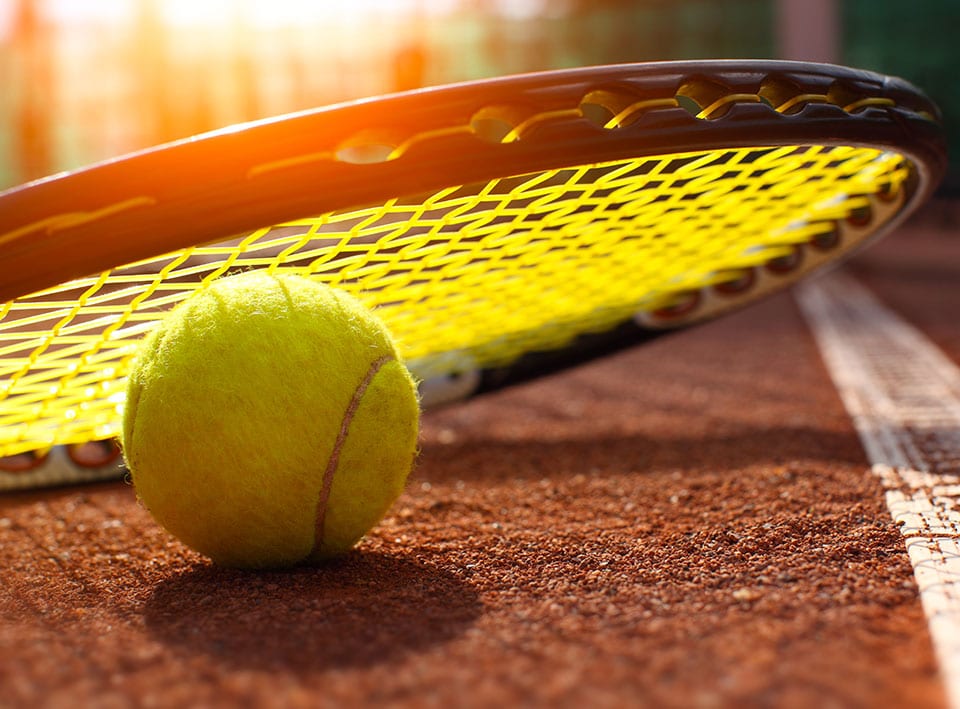
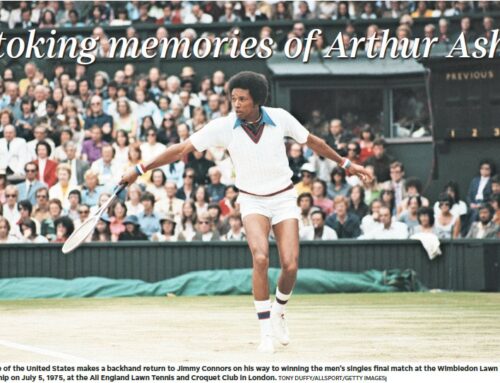
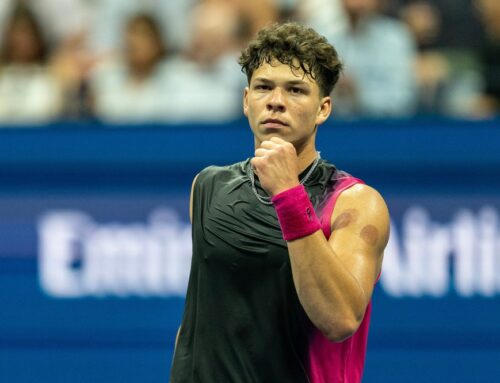
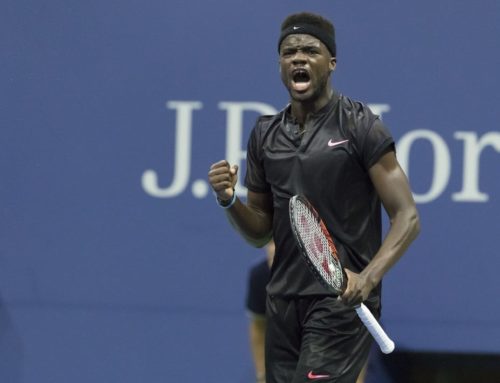
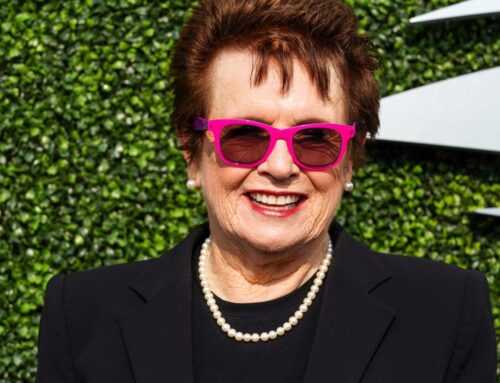
Leave A Comment